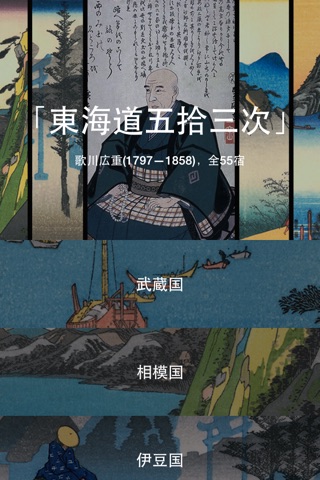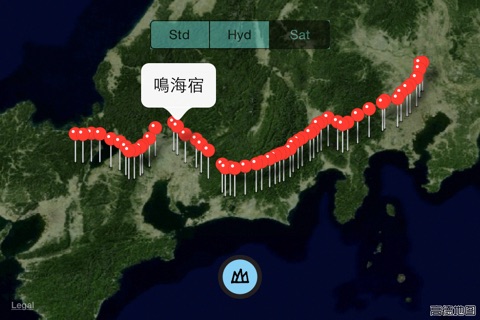
Tokaido app for iPhone and iPad
The Tōkaidō was one of the Five Routes constructed under Tokugawa Ieyasu, a series of roads linking the historical capital of Edo with the rest of Japan. The Tōkaidō connected Edo with the then-capital of Kyoto. The most important and well-traveled of these, the Tōkaidō travelled along the eastern coast of Honshū, thus giving rise to its name, which means ‘Eastern Sea Road’. Along this road, there were 53 different post stations, which provided stables, food, and lodging for travelers.
The Fifty-Three Stations of the Tōkaidō (東海道五十三次 Tōkaidō Gojūsan-tsugi), in the Hōeidō edition (1833–1834), presented here, is a series of ukiyo-e woodcut prints created by Utagawa Hiroshige after his first travel along the Tōkaidō in 1832.
The Tōkaidō road, linking the shōguns capital, Edo, to the imperial one, Kyōto, was the main travel and transport artery of old Japan. It is also the most important of the ‘Five Roads’, the five major roads of Japan (Gokaidō), created or developed during the Edo era to further strengthen the control of the central shogunate administration over the whole country.
Even though the Hōeidō edition is by far the best known, The Fifty-Three Stations of the Tōkaidō was such a popular subject that it led Hiroshige to create some 30 different series of woodcut prints on it, all very different one from the other by their size (ōban or chuban), their designs or even their number (some series include just a few prints).
The Hōeidō edition of the Tōkaidō is Hiroshiges best known work, and the best sold ever ukiyo-e Japanese prints. Coming just after Hokusais Thirty-six Views of Mount Fuji series, it established this new major theme of ukiyo-e, the landscape print, or fūkei-ga, with a special focus on ‘famous views’ (meisho). These landscape prints took full advantage of the new possibilities offered by the Western representation of perspective, that Japanese artists had by now fully assimilated. Hiroshiges series met with full success, not only in Japan, but later in Western countries.



